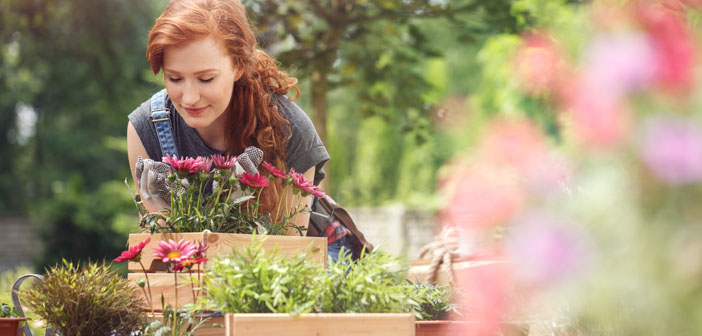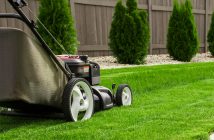When you’re eager to get back to the garden and begin planting, waiting for spring can feel endless. Luckily, there are several steps that can be taken during the colder months to prepare for spring. Not only will these tips keep gardeners busy while they wait for perfect planting weather but they will make gardening easier and more efficient while also providing a healthy foundation for plants.
Clean and Repair Tools
Cold weather is the perfect time to work on indoor tasks, and ensuring that gardening tools are in top shape is essential. Tools can be cleaned with soap or isopropyl alcohol to remove any dirt or debris that might inhibit their function. This also helps to guard against transmitting diseases from one plant to another. Pruning shears or scissors can be sharpened so they cut cleanly. You can also apply oil to wood handles in order to keep them from splintering. In addition, this is a great time to take stock of what you may need to purchase or replace in order to get ready for the planting season.
Prune Last Year’s Growth
It is important to prune trees and shrubs before they begin to fully leaf, so grab your newly sharpened shears and get to work. Trim away any broken branches from trees and gently shape shrubs so that they look neat and are growing only where you want them. Remove the flowers and old wood from plants such as roses or honeysuckle so as to encourage new growth and shape the bushes. This is also a good time to remove from the garden any plants that may have died during the winter or which floundered during the last growing season.
Clean Out Debris
Winter weather often breaks branches or shuffles debris such as leaves around. Clearing out the mess left behind by storms helps to create a clean, healthy blank slate for new garden growth. Leaves, branches and any other yard debris should be removed so that new shoots can push through the soil and grow without obstacles.
Remove Weeds
As soon as the weather starts to warm up, weeds will begin to grow. Habitually weeding can help to eliminate these invasive plants and can create a healthier, more open growing space for the plants you do want to encourage. It is often best to weed after it has rained, as the soil will be softer then and the weeds will be easier to pull.
Turn and Prep the Soil
Healthy soil is one of the most important elements for a healthy garden, and gardeners can help by turning the soil. Use a pitchfork to loosen the soil and rake it out. This helps to aerate the soil and allows gardeners to get rid of any hard clumps or rocks. It can also help you find those last pesky weeds and eliminate them. In addition, you can add fresh compost to the soil at this point in order to help it regain the nutrients it may have lost during the last growing season.
Fertilize
Fertilizing helps to increase the nutrient levels in soil that plants need to thrive in much the same way that adding compost does. Sprinkle a gentle fertilizer around the base of established plants to give them a nutrient boost and encourage new growth. Fertilizing around plants that have been pruned recently can also help them heal more quickly.
Plan Out Your Garden
Empty winter gardens may look bleak, but seeing these areas when they aren’t full can help you spot spaces that need to be filled out. This is also a great time to plan out where you want to insert new plants. Gardeners can take this time to divide beds into sections and create either a beautiful color scheme or gardening template or choose where to plant different fruits and vegetables. This is also a good time to re-edge gardens, bolster garden walls or fix any broken or loose garden bed frames.
Divide Perennials
Some perennials, such as lilies, grow larger and fuller each year. Although this is a good thing, it can also cause overcrowding, which can actually affect the overall health and appearance of the plant. Dividing perennials by digging up the entire plant and gently pulling apart the different tubers can help to mitigate this problem. Dividing perennials before they start to grow again is not only simpler but also safer for the plant. Part of the perennial can be replanted in the same area. The other parts can be planted in new spots or given away to other gardeners to enjoy.
Add Supports and Stakes
Often, you realize a plant needs support only after it has grown too large to hold itself up. Staking a plant at this stage, when the garden is full and the plant is too large to handle easily, can be a real challenge. However, if stakes and supports are added when plants are smaller and the garden is emptier, the task is much simpler. Consider which plants are likely to need stakes or trellises and place these during the colder months in order to prepare for the new spring growth.
Order Seeds
After planning and preparing the garden, it’s the perfect time to select which new plants you would like to add. After deciding, order seeds so you have them in plenty of time. You can even start these seedlings indoors during the colder months before transferring them outside in the spring. You can also order shrubs or trees. Many garden centers offer discounts to those gardeners who place orders earlier in the season.









